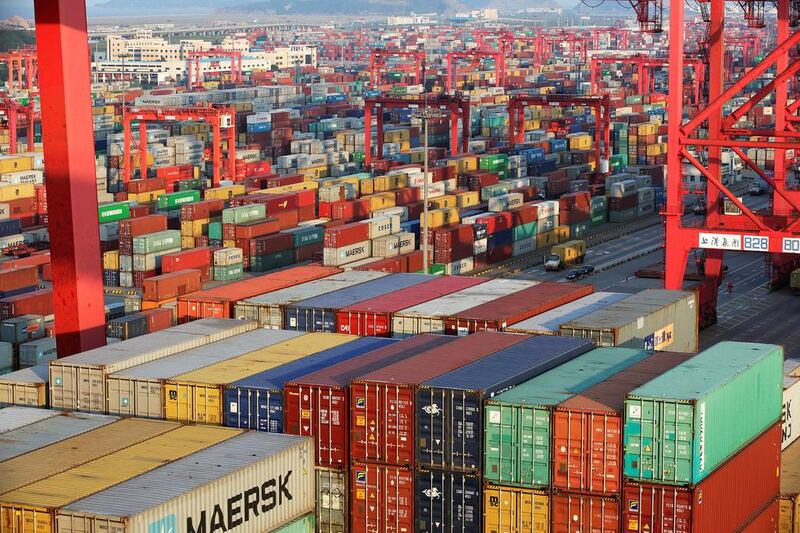The global shipping industry is getting its biggest payday since 2008 as the combination of booming demand for goods and a global supply chain that is collapsing under the weight of Covid-19 drives freight prices ever higher.
Whether its giant container ships stacked high with of 12-metre steel boxes, bulk carriers whose cavernous holds house thousands of tonnes of coal, or specialised vessels designed to pack in cars and trucks, earnings are soaring for ships of almost every type.
With the merchant fleet hauling about 80 per cent of world trade, the surge reaches into every corner of the economy. The boom back in 2008 brought with it a huge wave of new vessel orders, but the rally was quickly undone by a demand collapse when a financial crisis triggered the deepest global recession in decades.
This boom’s causes are twofold – an economic reopening after Covid that has spurred surging demand for goods and raw materials. Alongside that, the virus continues to cause disruption in global supply chains, choking up ports and delaying vessels, all of which is limiting how many are available to haul goods across oceans. That has left the majority of the shipping sector with bumper earnings in recent months.
The bonanza is centred around container shipping – where rates are spiralling ever higher to new records – but it is by no means limited to it. The shipping industry is posting its strongest daily earnings since 2008, according to Clarkson Research Services, part of the world’s biggest shipbroker. The only laggards are the oil and gas tanker markets, where more bearish forces are at play.
“I’m not really sure the perfect storm covers it – this is just spectacular,” Peter Sand, chief shipping analyst at trade group Bimco, said. “It’s a perfect spillover of a red-hot container shipping market to some of the other sectors.”
Container shipping remains the star. It now costs $14,287 to haul a 12-metre steel box from China to Europe. That is up more than 500 per cent on a year earlier and is pushing up the cost of transport everything from toys to bicycles to coffee.
Those gains are already showing in the earnings of AP Moller-Maersk, the world’s largest container line, which hiked its estimated profits this year by almost $5 billion last month. In a sign of just how profitable the industry has become, CMA CGM SA – the world’s third largest carrier – said it is freezing its spot rates to preserve long-term client relationships. In other words, the company is turning away profit.
While the demand for retail goods is lifting container markets, a recovering global economy is also churning through more raw materials – boosting the revenues of bulk ships that carry industrial commodities. In that sector, earnings recently hit an 11-year high and are showing little sign of abating down the line with consumption expected to remain firm for the rest of the year.
“Strong demand for natural resources combined with Covid-related logistical disruptions” are supporting spot and future freight rates, Ted Petrone, vice chairman at Navios Maritime Holdings, which owns a fleet of bulk carriers, said on an earnings call last week. “Supply and demand fundamentals going forward remain extremely positive”.
Such is the extreme strength across shipping that some bulk carriers have even turned to carrying containers on their decks. Golden Ocean Group is among the companies that said it is looking at the idea. While it could spur additional profits in an already windfall year for owners, it is not without risks as bulk carriers aren’t designed to carry the giant boxes.
“It tells a story about the special situation we are in,” in the container market, Ulrik Andersen, Golden Ocean’s chief executive, said earlier this month.
While for many shipping sectors Covid-19 has brought a boom, for oil tankers it has meant loss-making trades for much of 2021 and owners effectively subsidising the shipment of crude oil.
With OPEC+ still keeping a chunk of supply offline there are too many ships and too few cargoes, keeping earnings depressed. That has burnt one of the hottest trades in the sector at the start of the year – bullish oil tankers positions on the hope of a summer surge in oil demand.
Still, with on land oil inventories declining, analysts continue to anticipate a rebound. Rates could begin to move higher in October as stockpiles dwindle and demand for tankers grows, Pareto Securities analysts, including Eirik Haavaldsen, wrote in a note to clients.
But for now, the tanker market remains the only blot for an industry where freight capacity is ever tightening. The ClarkSea index, which tracks daily earnings across a diverse range of shipping sectors, has already posted its longest run of monthly gains on record.
Those bumper earnings are also being seen in more esoteric markets. Car carriers now cost the most to hire since 2008. Rates for general cargo ships with heavy equipment are also surging, adding to a boom that is being led by container and bulk shipping.






